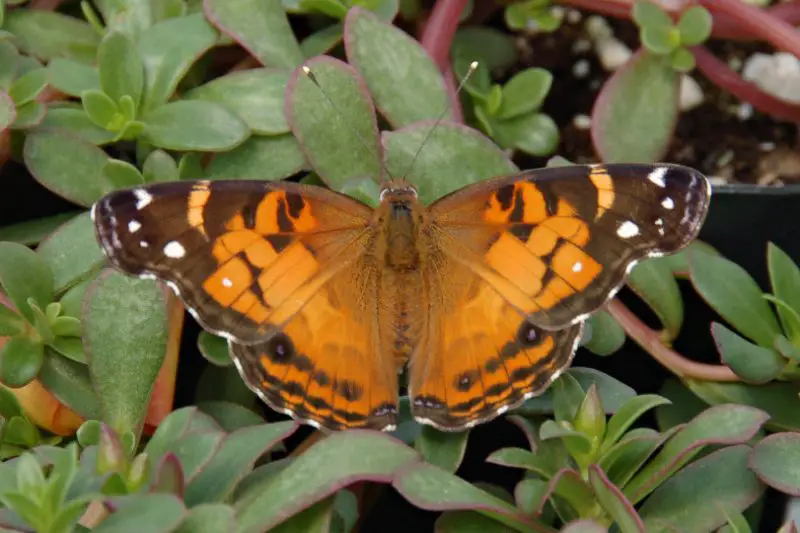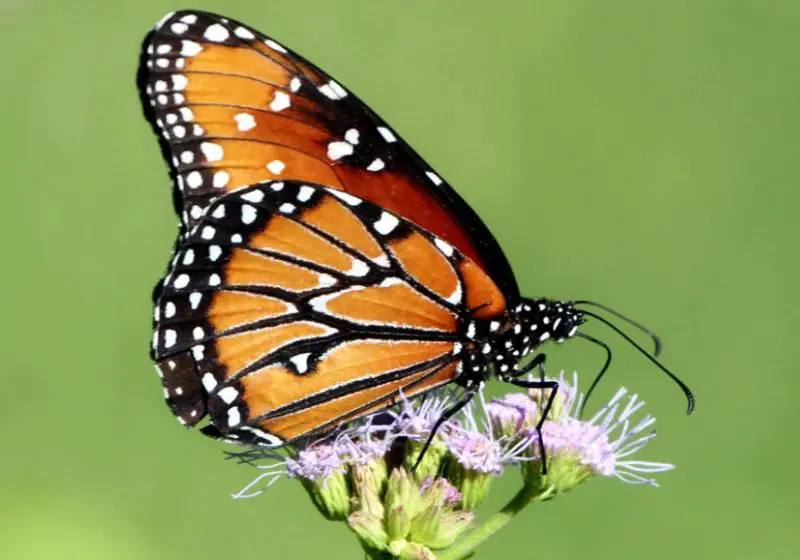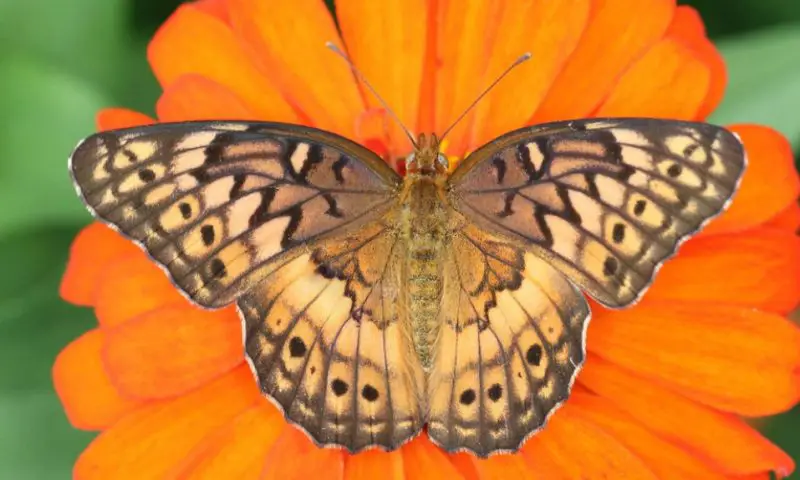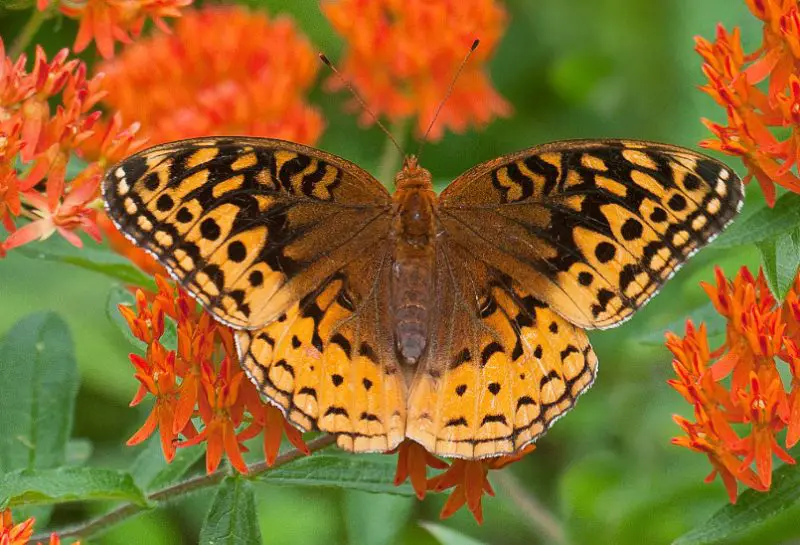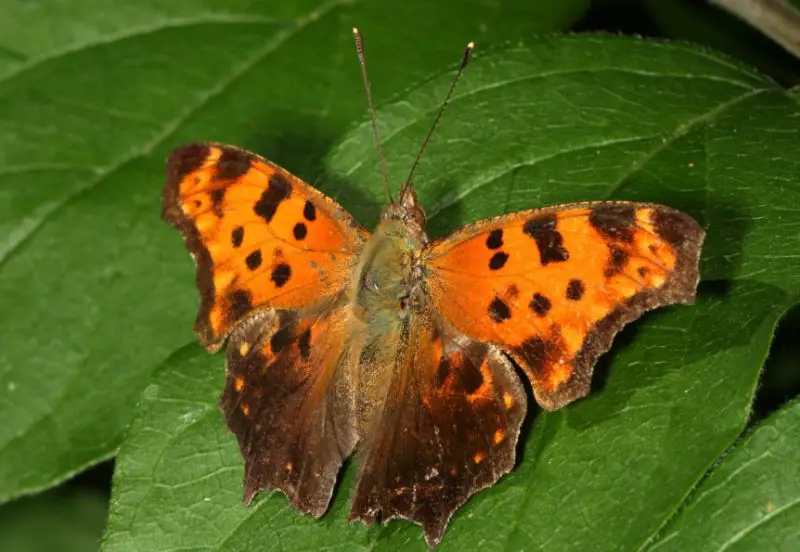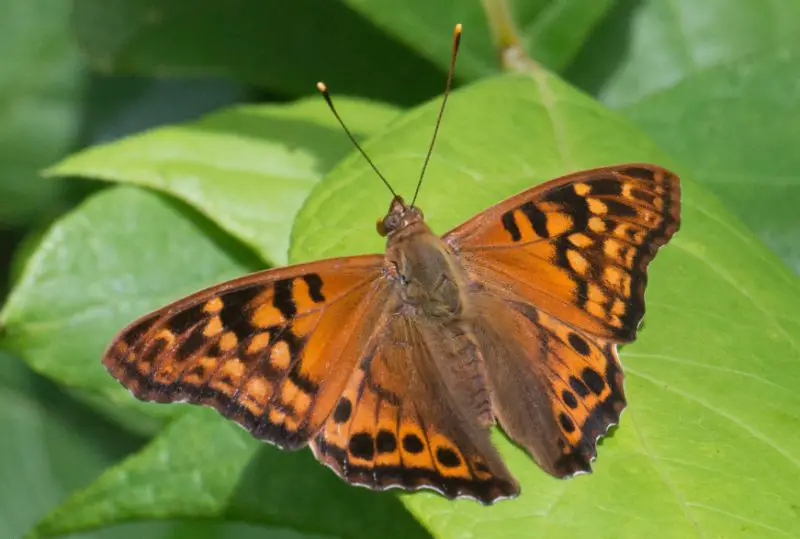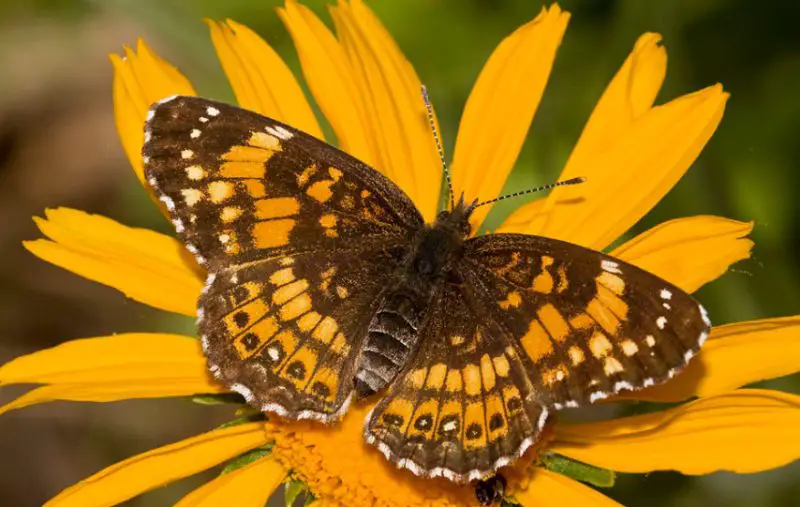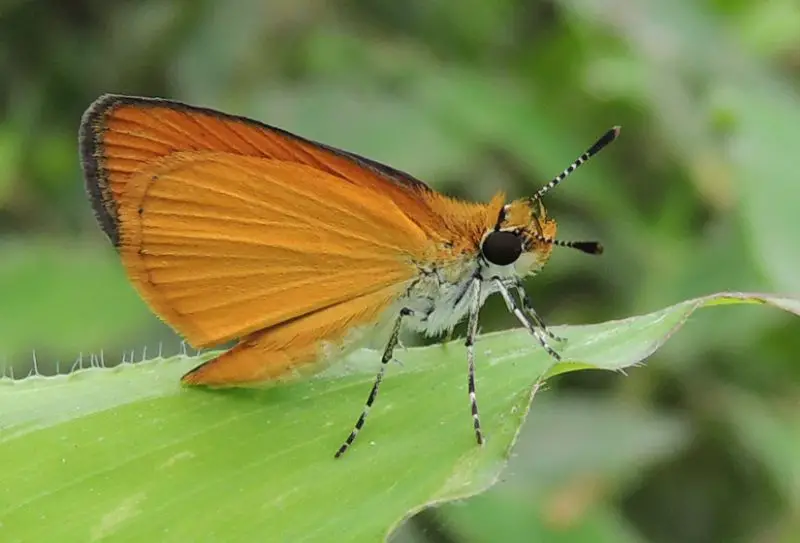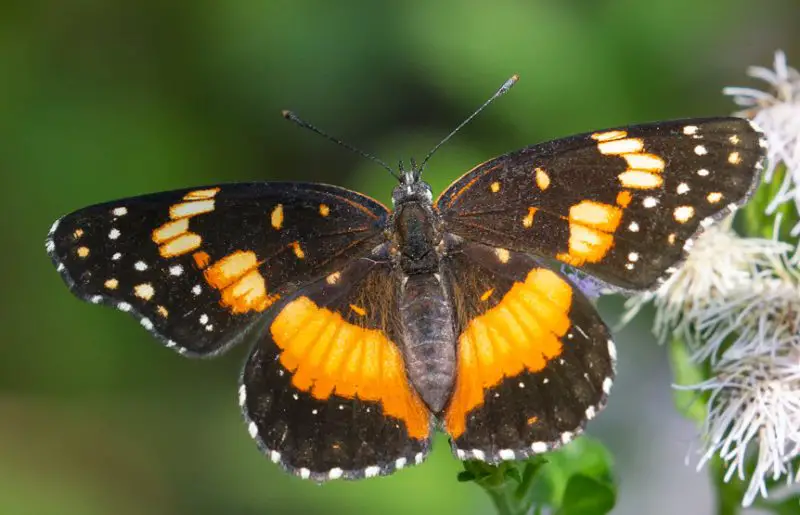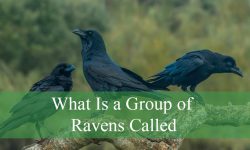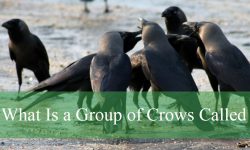North and South America are home to the Bordered Patch (Chlosyne lacinia), sometimes referred to as the Sunflower Patch. Their appearance is variable; the forewings are primarily black with rows of white and yellow to orange markings, while the hindwings can vary from black to having reddish-orange regions or spots.
They can reach a wingspan of up to 4.8 cm and are found in desert hills, forests, and agricultural areas. They can be seen year-round in southern Texas, from January to November in Arizona, and from May to October in California.
Western Giant Swallowtail
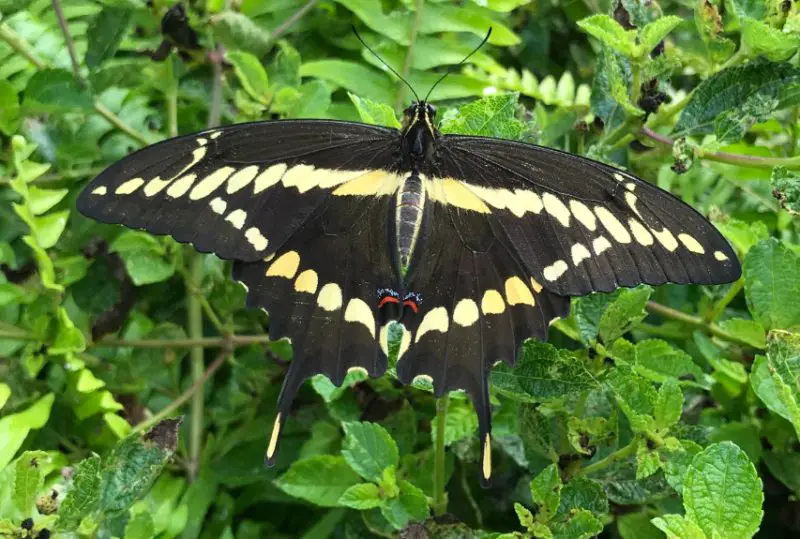
Throughout the southwestern United States, Costa Rica, Panama, Mexico, and El Salvador, the Western Giant Swallowtail (Papilio rumiko) is widely distributed.
Their 5.8cm forewings have two yellow bands, a central band with nine spots, and smaller yellow spots. Their hindwings have two yellow bands that extend from the forewings and are decorated with a yellow tail tip, an orange eyespot, and a blue crescent.
Individual eggs are laid by this beautiful butterfly on the leaves and young shoots of its host plant.
Monarch
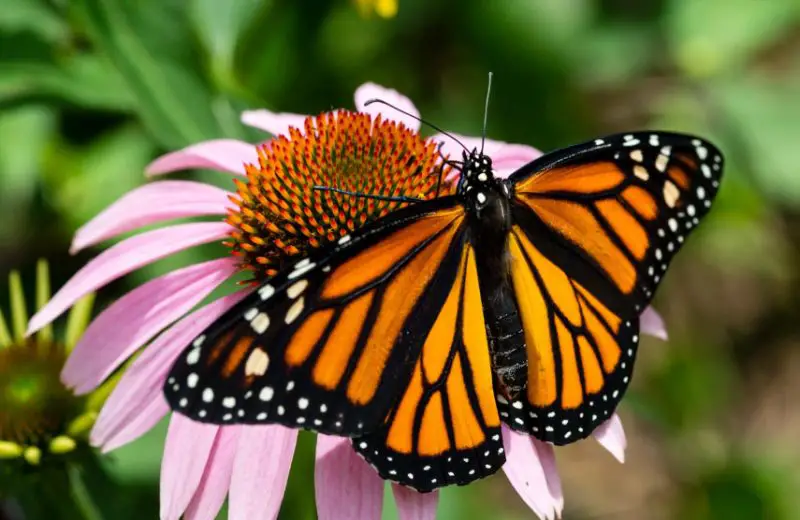
The Monarch butterfly, scientifically known as Danaus plexippus, is commonly recognized for its distinctive black, white, and orange pattern and a wingspan of up to 10.2cm. As a vital pollinator species, it is prevalent throughout North America, often seen in forests and mountain regions.
Remarkably, Monarchs undertake migratory journeys spanning over 2,800 miles to central Mexico for hibernation. Their vibrant appearance and migratory habits make them easily identifiable and a subject of fascination.
Gulf Fritillary
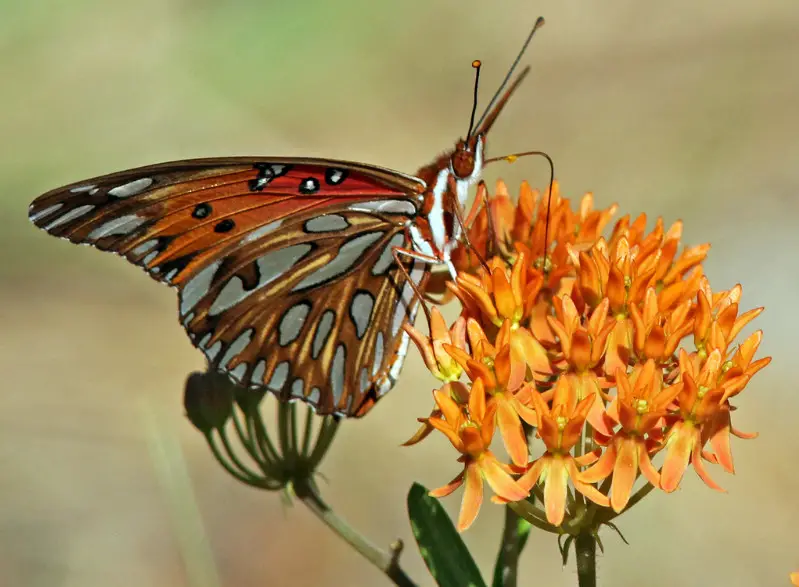
The Gulf Fritillary, or Passion Butterfly (Dione vanillae), is a striking orange butterfly prevalent in the Southern United States, notably Florida and Texas. It employs a defense mechanism of releasing a foul-smelling chemical when threatened, deterring predators. Recognizable by its vibrant orange wings with black markings and three white dots encircled by black on the forewings, this species has a wingspan of up to 9.5cm.
Found in various habitats, from open fields to city gardens, it thrives throughout the year in the southern regions and from January to November in the north.
Pearl Crescent
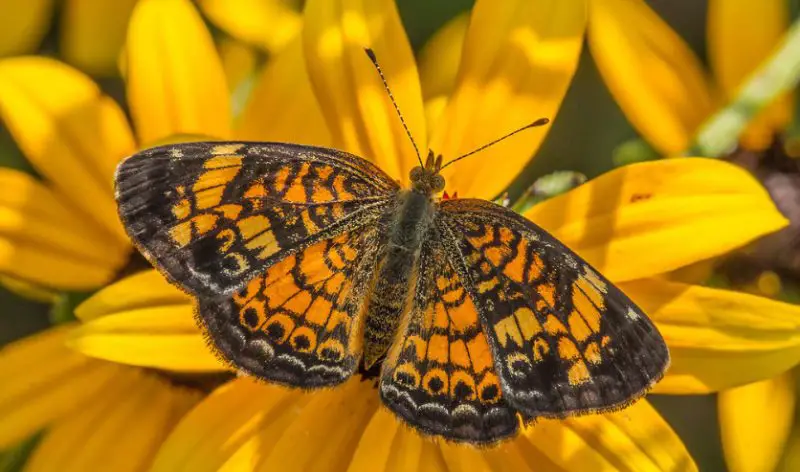
With the exception of the west coast, the Pearl Crescent Butterfly (Phyciodes tharos) is frequently sighted across the country. They are found in a variety of locations, including meadows, pastures, road sides, and pine woodlands. Males have orange upper sides with black borders and black antenna knobs. Their wingspan is up to 34 mm, and they rely on the nectar of different flowers to survive.
Red Admiral
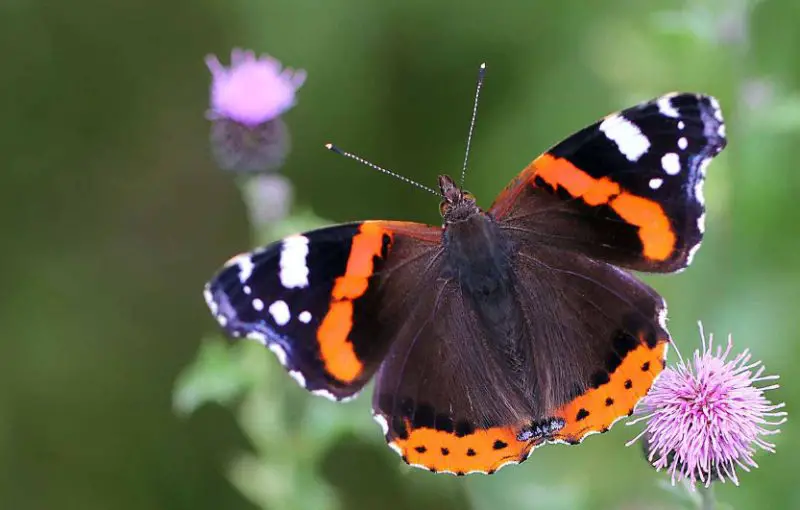
The Red Admiral (Vanessa atalanta) is a sizable and robust butterfly commonly found in gardens, known for its erratic flight patterns. With a wingspan of up to 7.2cm, they exhibit striking features: black with white spots and an orange band on both wings. Their population has increased over the years, thriving from March to October in the North and October to March in the South.
They frequent various habitats, including woods, yards, marshes, fields, and parks, where they feed on nectar from flowers and other sources like tree sap and fermenting fruit.
Painted Lady
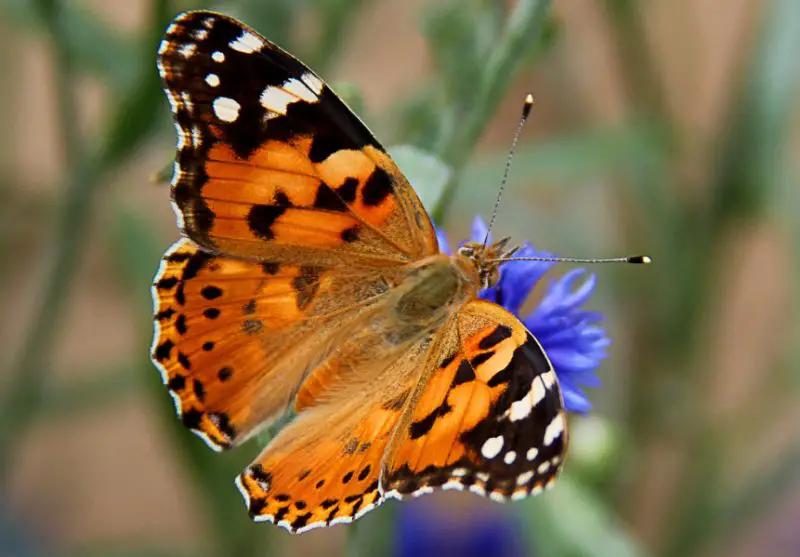
The orange upper wings of the Painted Lady (Vanessa cardui), a common butterfly in the United States, are decorated with black and white markings. Its hind wings have a noticeable black patch, while its asymmetrical black front wings are black. They are frequently sighted from May to October in the East and from October to April in the South, with a wingspan of up to 7.3 cm.
They graze on tall plants like thistles, cosmos, and joe pye weed, and they occupy a range of settings, such as ancient fields, urban gardens, and dunes.
Fiery Skipper
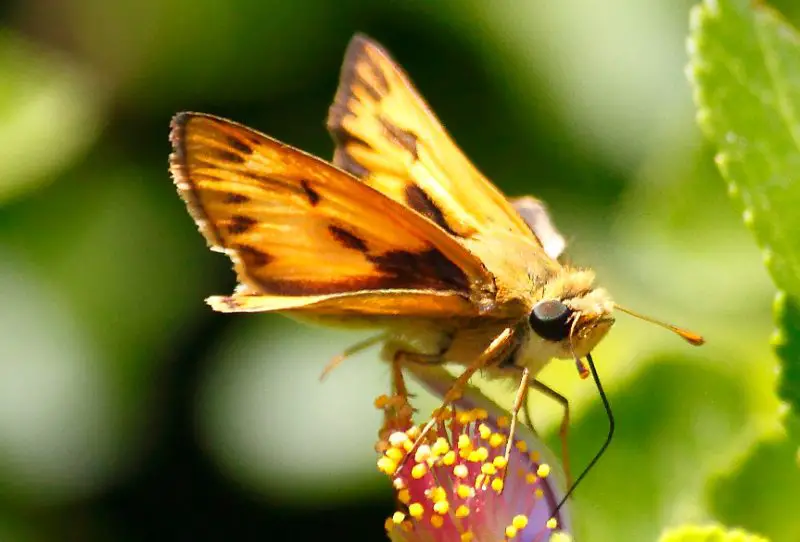
The Fiery Skipper (Hylephila phyleus), which has been studied since 1773, can grow to a maximum length of 2.5 cm. While females are dark brown with little brown dots on their wings, males are orange or yellow in color. Often regarded as pests, caterpillars are green to pink-gray in color and have black heads.
These butterflies, which feed on nectar from a variety of plants like thistles and swamp milkweed, are common from May to August in the north and all year long in Southern Texas and Florida.
California Tortoiseshell

The orange wings of the California Tortoiseshell butterfly (Nymphalis californica) are spotted with black dots and have a black border. The wings also have jagged edges. The wingspan is 7cm, and they are brown below.
Across Montana, British Columbia, California, and Mexico, males are frequently seen waiting for females to lay their eggs on host plants in the late afternoon.
They feed on flower nectar in forests, brush areas, forest margins, and clearings. They fly mostly throughout the spring until May.
California Sister
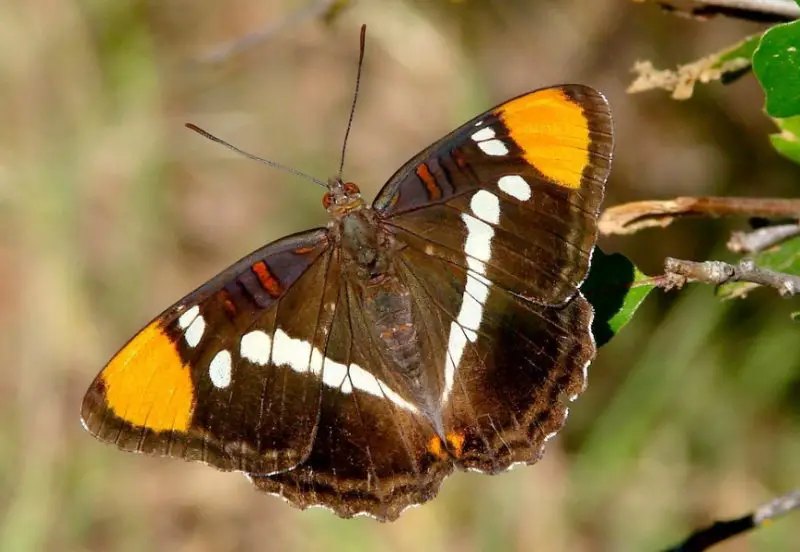
The California Sister, or Adelpha californica, is a common sighting in California, although it has also been observed in Oregon and Nevada. Its forewings have two orange patches and its wings are dark brown with a cream band. Below, they display a combination of orange, blue, brown, and white.
They can fly from March to October and are frequently seen close to host plants in canyons with water, with a wingspan of up to 10 cm. These big butterflies dine mostly on nectar from flowers in the fall, but they also like rotten food.
They are often found around water sources in mid-elevation ranges, foothills, and woodland borders.
Mylitta Crescent
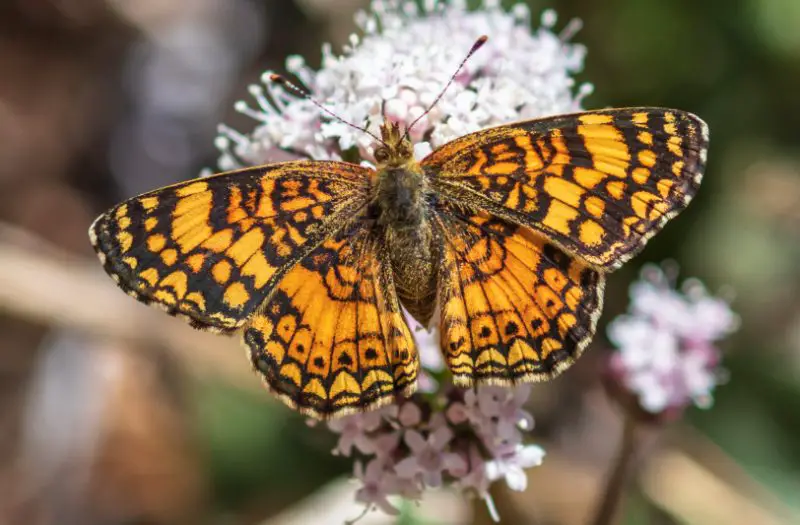
With a wingspan of 3.7 cm, the Mylitta Crescent (Phyciodes mylitta) is indigenous to western North America. It is distinguished by its orange wings with black patterns and a white border; females are darker than males. They are found in California from June to October and in Canada from June to late July.
They are mostly found in meadows, woodlands, and along streams. They feed on the nectar of flowers. While females lay their eggs on the leaves of host plants to provide sustenance for the born caterpillars, males actively seek out females to mate with.
Flying from British Columbia to Mexico, they frequent a variety of habitats from sea level to high mountains, including roadways, open lots, parks, and meadows. They fly from April to September, and occasionally until November in southern regions.
Small Copper
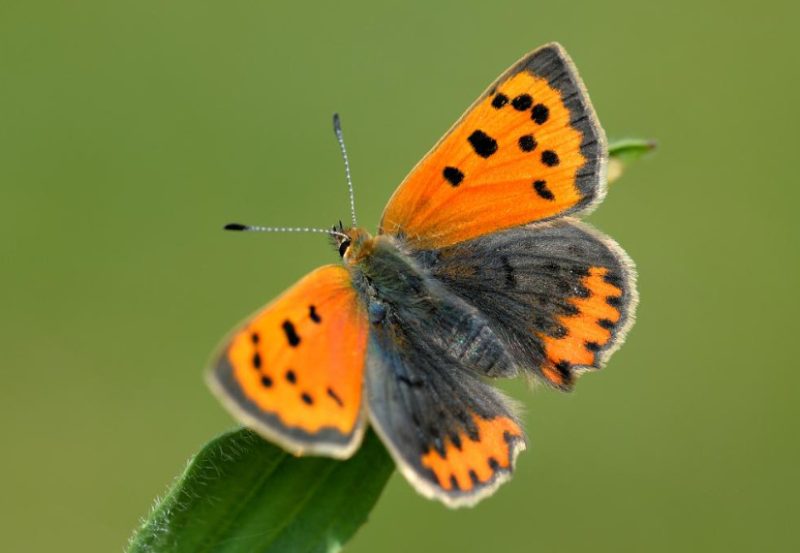
Often seen in pairs or alone, the Small Copper Butterfly (Lycaena phlaeas) can occasionally create large gatherings in ideal settings. Males guard certain territories for mating, exhibiting territorial behavior.
They have a 3.5cm wingspan, orange/red color, black markings, and gray hindwings with orange borders. They eat flower nectar, especially from white clover and buttercups, and are frequently spotted from July to September.
They are found from Canada to Georgia and North Dakota to Tennessee, Georgia, and Arkansas. They are found in disturbed habitats such as roadsides, fields, rocky outcrops, and pastures.
Satyr Comma
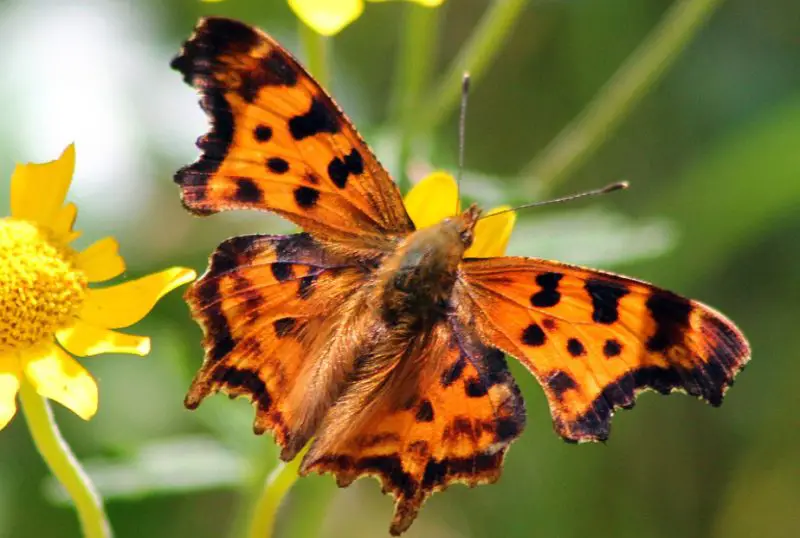
The beautiful Satyr Comma (Polygonia satyrus) butterfly has a wingspan of up to 6.4 cm. Its forewings are a vivid orange to yellow color with two separate black spots, and its hind wings have a single black mark in the middle. They have a beautiful golden brown hue underneath. Usually, females lay lone eggs under nettle leaves, which provide food for the caterpillars as they hatch.
Adults hibernate, and the best times to see these butterflies flying are from July to September in Nevada and the neighboring areas, and from February to November along the Pacific coast.
They live in a variety of settings, including valleys, wooded prairie ravines, riparian woodlands, damp woods, and by streams. They eat a varied diet that includes rotting fruit, flower nectar, and tree sap.
Vesta Crescent
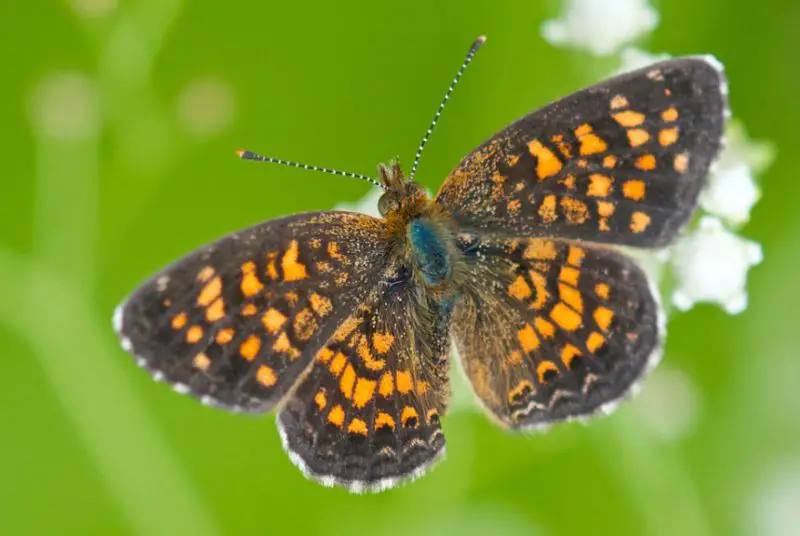
The remarkable orange wings of the Vesta Crescent butterfly (Phyciodes graphica) are lined with black. They have a wingspan of up to 3.8 cm and are common in southern Texas from February to December. In the north, they are seen from April to September. They are present throughout Mexico all year round.
They mostly feed on flower nectar and are typically found in deserts, grasslands, road sides, streambeds, and thorn forests in Guatemala, Mexico, Arizona, Texas, Colorado, Nebraska, and Arkansas.
Mormon Fritillary
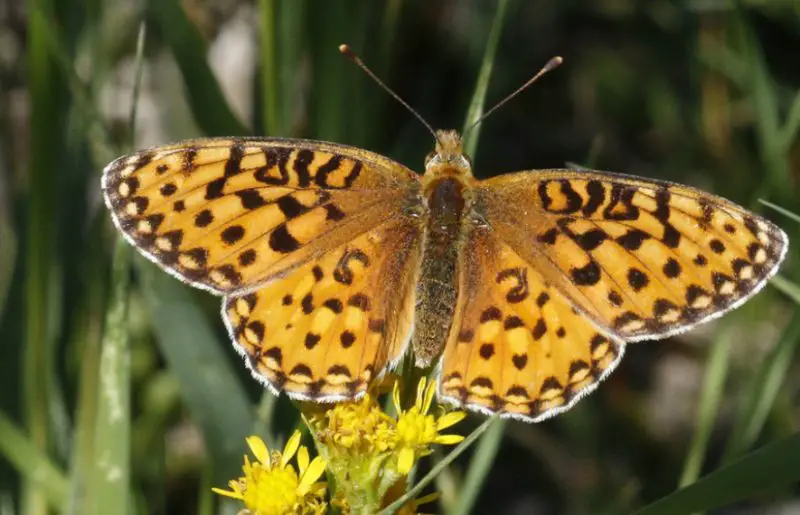
The Mormon Fritillary (Speyeria mormonia) has 6.1cm of wingspan and orange-brown coloration, with orange to brown on the underside of the hind wings. Their typical habitats include valleys, forest clearings, mountain meadows, and prairies.
June through September are when they are most frequently observed. Their habitat extends from Nevada to New Mexico and from California to Arizona.
Edith’s Checkerspot
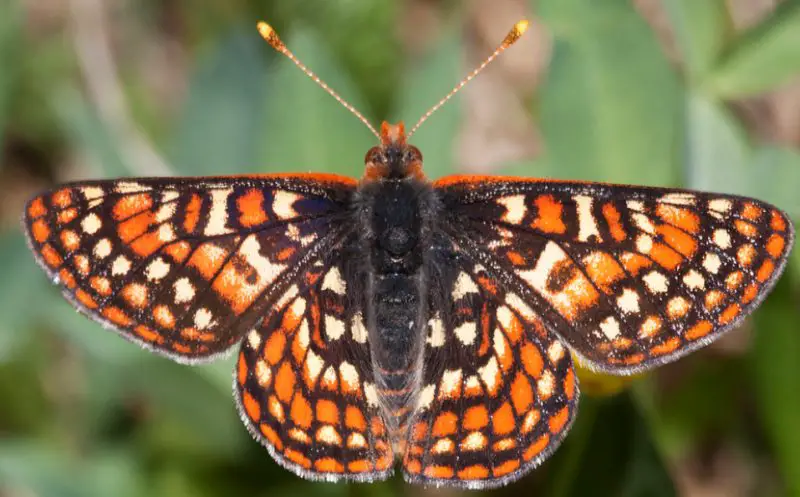
The black, rounded forewings of the Edith’s Checkerspot butterfly (Euphydryas editha) are ornamented with pale yellow to orange or white banding. The undersides of the hind wings have orange and cream bands. They may spread their wings up to 5.1 cm, and they are usually seen in low-lying areas from March to May, and in higher-lying areas from June to August.
Their habitat includes alpine pastures, open forests, foothills, meadows, and coastal chaparral. They are found in Baja California, Nevada, Utah, and Colorado.
Bronze Copper
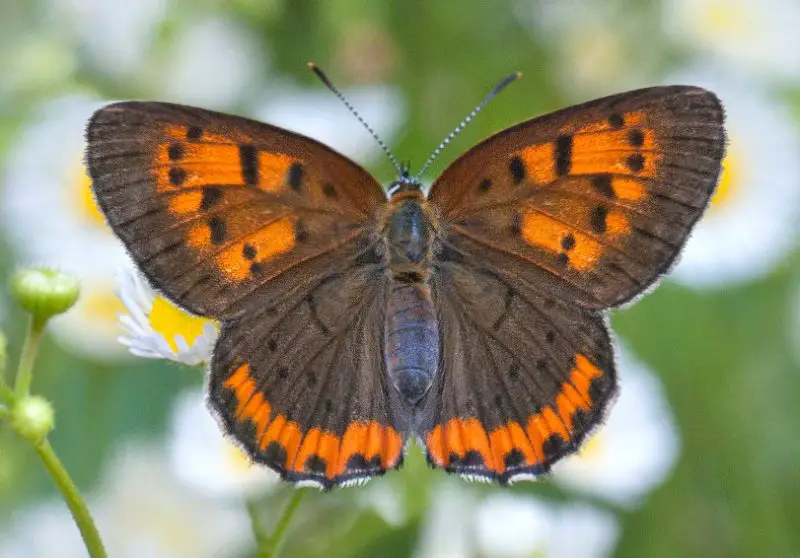
Thorsalea hyllus, commonly known as the Bronze Copper Butterfly, is found in eastern Montana, from Maine to southern Canada, and also in Colorado, Mississippi, Maryland, West Virginia, and Arkansas. Males have 4.8cm of copper-brown wingspan, and females have orange forewings with black dots on them.
They are common in low-lying wetlands, such as marshes, ponds, wet meadows, and bogs, where they feed on the nectar of blackberry and red clover plants.
Callippe Fritillary
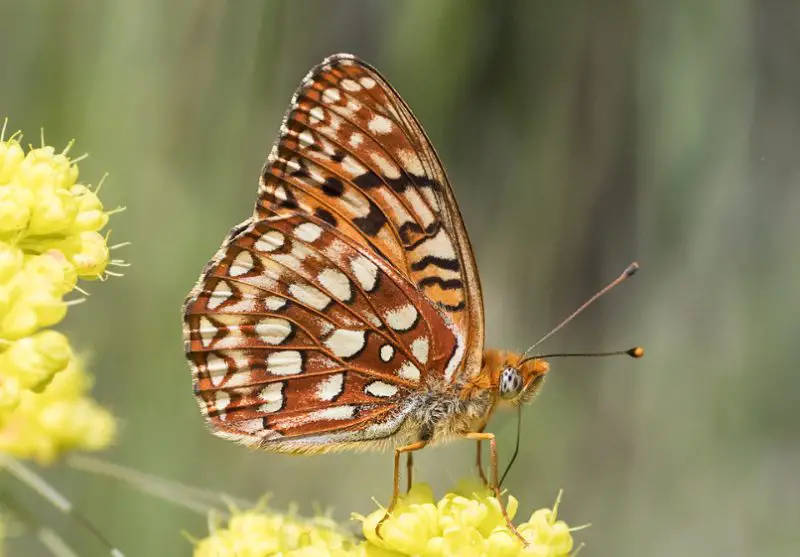
The Callippe Fritillary butterfly, or Speyeria callippe, is distinguished by its regularly spaced patterns on tawny to bright red/orange upper wings. Their wings are decorated below with narrow brown borders and silver triangle-shaped dots.
Their range includes sagebrush, chaparral, prairie hills, dry forests, and southern California, Utah, Nevada, and Colorado. Their wingspan is 6.4 cm.
There are conservation concerns since they are endangered and thought to be in danger of going extinct, especially in San Francisco Bay.
Gorgone Checkerspot
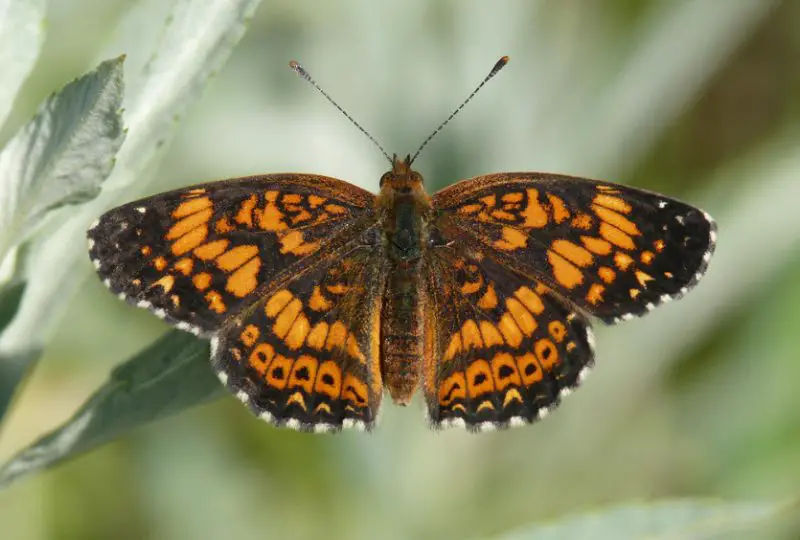
The orange wings of the Gorgone Checkerspot (Chlosyne gorgone) are marked with black, with solid black spots on the hind wings. Below is a noticeable brown zigzag design with white bars. Their 4.5cm wingspan allows them to flutter from July to August in the north and from May to September in the central regions. In the south, they have been sighted from April to September.
In open settings including hardwood forests, forest borders, old fields, and grasslands, these butterflies prefer the nectar of yellow flowers. They range in location from Georgia and Louisiana to central Texas and New Mexico, with a few isolated populations found in the Rocky Mountains.
Silver-Bordered Fritillary
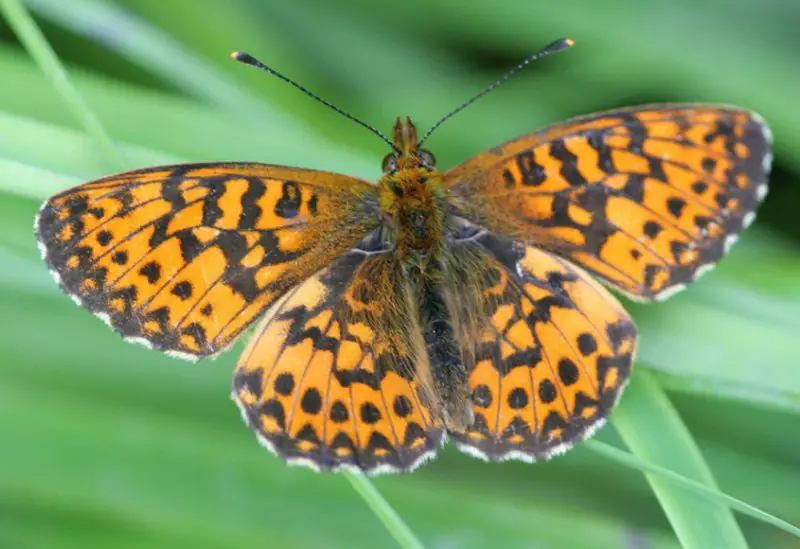
With a wingspan of 5.4 cm, the Silver-bordered Fritillary butterfly (Boloria selene) has black and orange wings. They are usually seen from May to September in the east and from June to July in the north. They are attracted to the nectar of composite flowers such as goldenrods and black-eyed Susans.
They live in bogs, marshes, and wet meadows and are commonly found from northern Washington to the Rocky Mountains and from Illinois, Maryland, and Virginia to New Mexico.
Green Comma
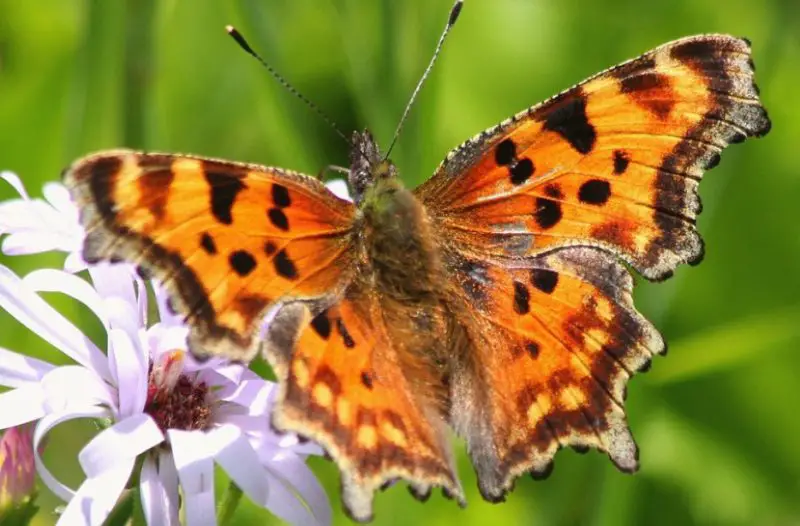
The Polygonia faunus butterfly, sometimes known as the Green Comma, has raggedly edged reddish-brown wings with darkened margins and yellow dots on the rear wings. They can reach a maximum wingspan of 6.4 cm and are common from May to August.
They eat flower nectar and excrement and are usually seen in woodlands, canyons, and by streamsides in mountainous areas from New England to the Great Lakes.
Northern Crescent
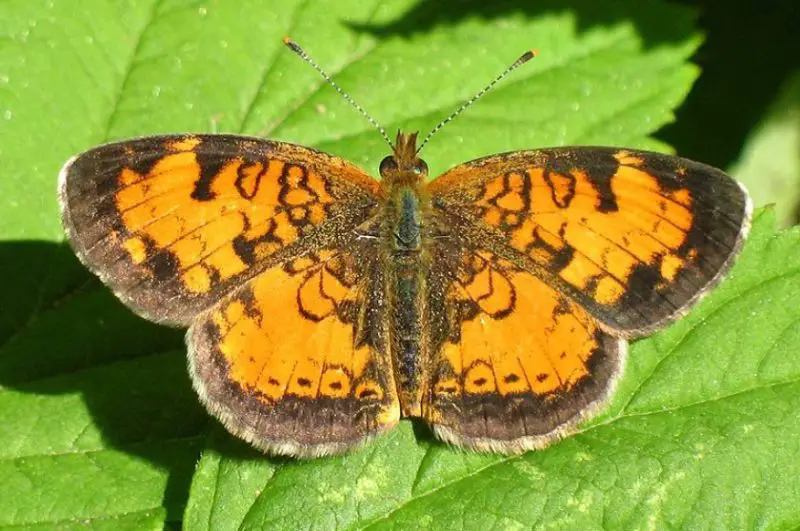
With a wingspan of 3.8 cm, the Northern Crescent (Phyciodes cocyta) is a member of the Nymphalidae family. They live in fields, glades, woodland openings, and meadows; they are common from June.
Males patrol host plants for females; they are orange/brown in color with dark margins. They prefer rocky places close to streams, marshes, and shale barrens.
They feed on the nectar of white clovers, fleabane, and dogbane. Distributed from southern Canada to British Columbia, via New England and Newfoundland.
West Coast Lady
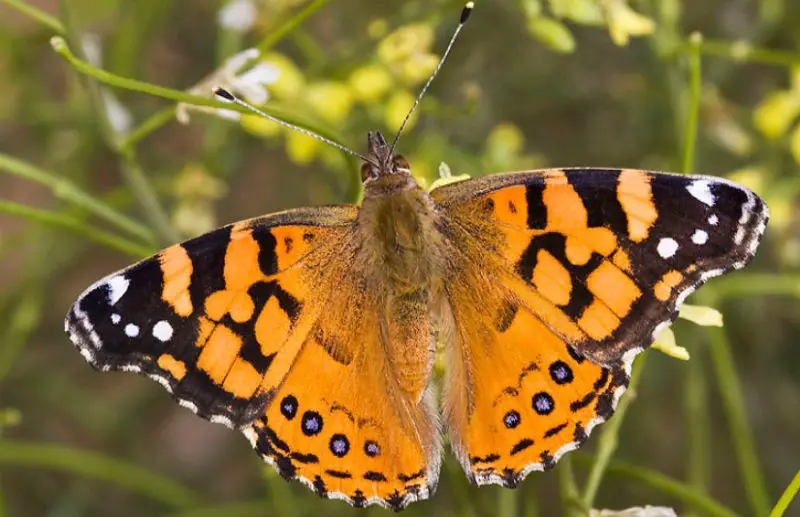
The brush-footed butterfly known as the West Coast Lady (Vanessa annabella) is found over most of the Western United States and southwestern Canada. Their wingspan is 5.7cm, and they have an orange/brown color with an orange bar on the front border.
To lay a single egg on the leaves of the host plant, males wait for receptive females. When they are adults, they hibernate and consume flower nectar; they are frequently seen in fields, gardens, slopes, and weedy places.
Dispersed throughout British Columbia, California, Colorado, Mexico, Montana, North Dakota, central Kansas, and Southern Ontario in Western North America.
Hobomok Skipper
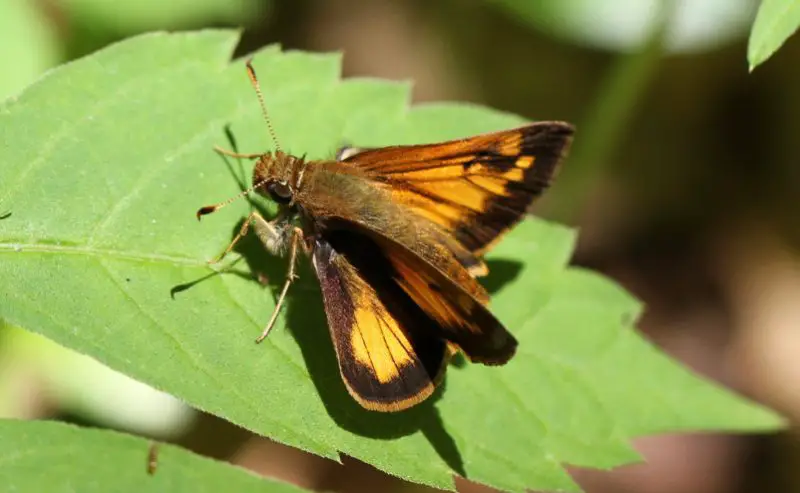
The Hobomok Skipper (Lon hobomok) is distinguished by its rounded wings, which have irregular black markings and yellow to orange tints. In clearings in the woods, males perch high and wait for receptive females. On grass leaves, females deposit their eggs for the caterpillars to eat. Adults consume the nectar of henbit, milkweed, and blackberries.
They live in wet forests, bogs, streambanks, and sometimes urban parks from Nova Scotia to Oklahoma, where there are solitary populations in Colorado and New Mexico.
Field Crescent
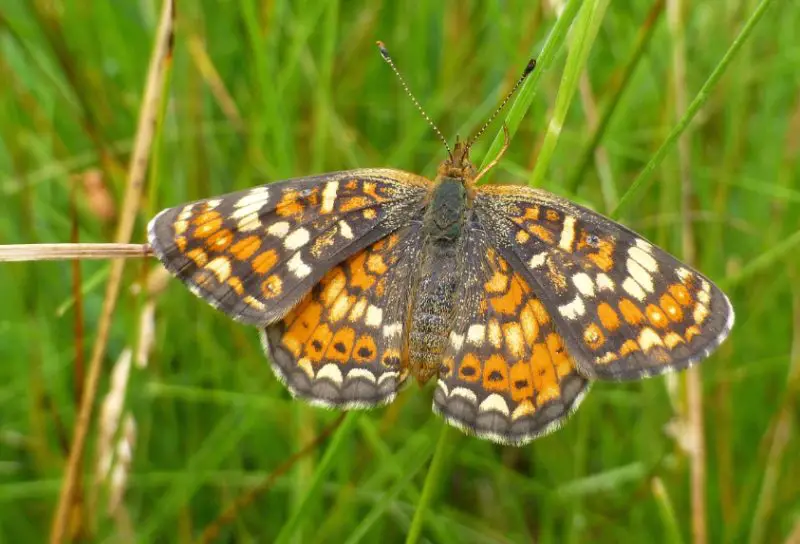
Phyciodes pulchella, a member of the Nymphalidae family, is the Field Crescent butterfly. Its wingspan measures 4.5 cm, and it flies from May to August. Its forewings are orange and black in color, with yellow to brown tones, a prominent yellow stripe, and little black patches. Below, the hindwings are marked with rusty colors ranging from brown to yellow.
While females lay their eggs in clusters beneath the leaves of their host plants, males search for partners throughout the day. As they grow older, caterpillars depend on these leaves for nutrition.
These butterflies prefer open areas in southern California, Arizona, New Mexico, and the western Great Plains. They are often found in meadows, fields, and mountains.
Meadow Fritillary
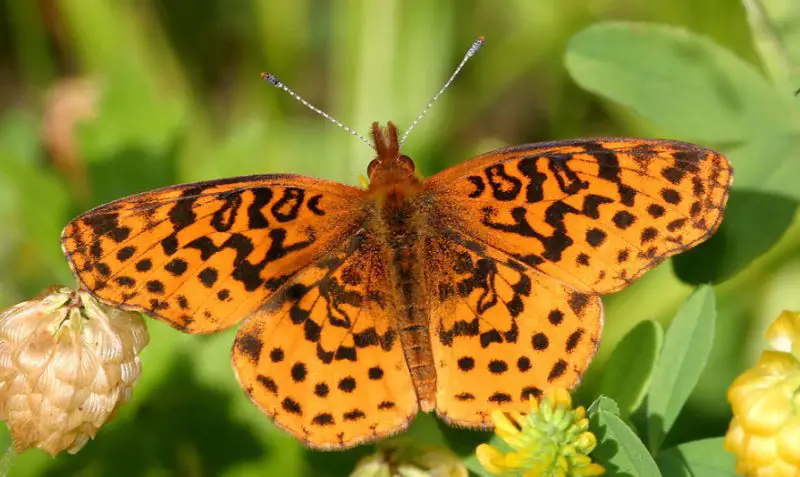
The forewing of the Meadow Fritillary (Boloria bellona) is squared off and has complex black markings that range from orange to crimson. Below, the hindwing displays a purple-brown and orange color combination with silver specks and a white patch. These mostly male butterflies, which have wingspan of 5.1 cm, search for mates in meadows during warm daytime hours.
They are active from April to mid-October and feed on dandelions and black-eyed Susans. Growing in moist environments like as marshes and wet aspen forests, they are found in Oregon, central Colorado, Tennessee, and North Carolina, gradually settling in disturbed areas further south.
Behr’s Metalmark
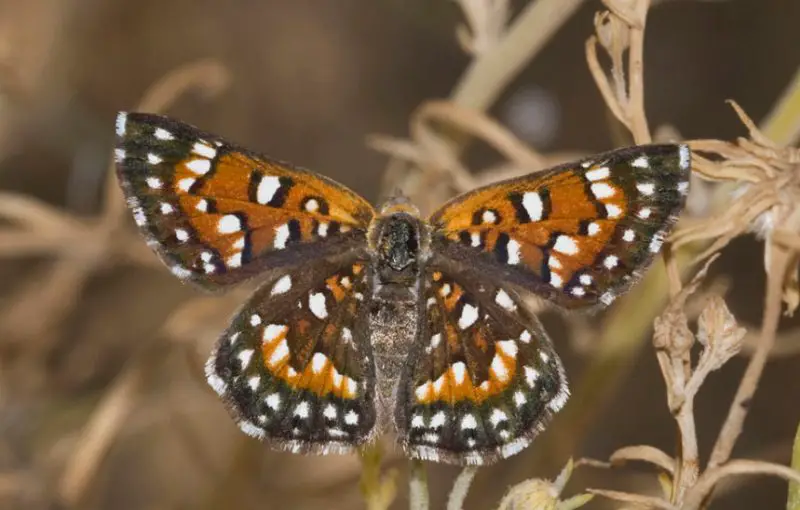
The reddish-orange-brown upperside of the Behr’s Metalmark (Apodemia virgulti) butterfly is speckled with black and white dots. While the underside is gray with white markings and has an orange patch beneath the fore wing, both wings have an orange spot.
Males are found in hill hollows in California, where they wait for the females to mate and place their eggs on the leaves of host plants. They are active from March to September and consume nectar from flowers in a variety of settings.
Baltimore Checkerspot
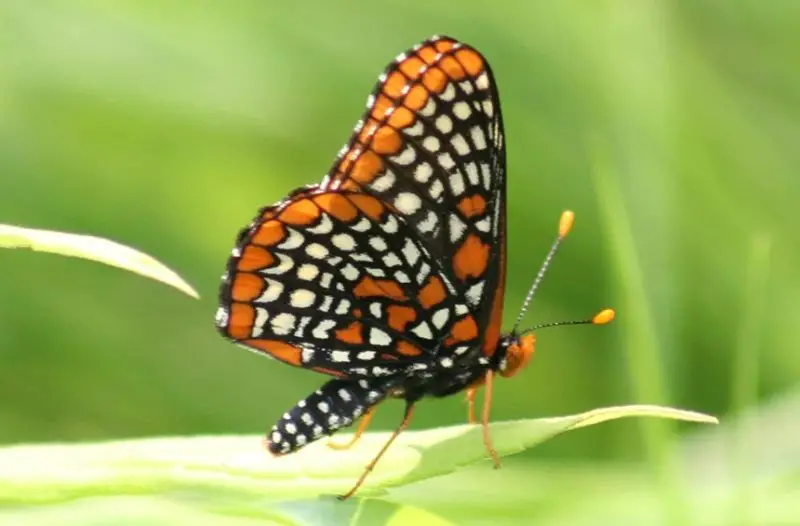
The orange crescents on both wings of the Baltimore Checkerspot (Euphydryas phaeton) are clearly identifiable due to the cream-to-white spots that are grouped in rows on them. They are common from June to August in the north and from May to June in the south, with a wingspan of up to 7 cm.
They are found in bogs, marshes, and wet meadows, among other places. They consume the nectar of milkweed, wild rose, and viburnum. In the southwestern United States, as well as in northern Georgia, northern Mississippi, Texas, Nebraska, and northeast Oklahoma, they are also observed on arid, exposed hillsides.
Northern Checkerspot
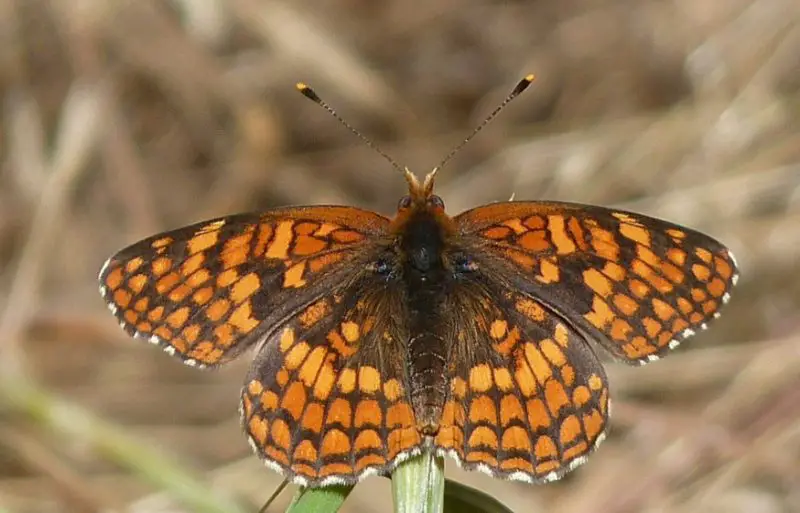
The brown to red Northern Checkerspot butterfly (Chlosyne palla) has orange underwings with cream stripes and dark hind wings. Women have white patches. Males perch and soar in valleys close to host plants, waiting for ladies to mate using their 4.8cm wingspan. Laying eggs beneath the leaves of the host plant or on the ground provides sustenance for the developing caterpillars.
They live in open forests, stream edges, chaparrals, and sagebrush habitats, and they are common from April to July in hilly and northern regions, and from April to May in coastal California. They are nectar-eating flowers. found extending southward from southern California to Colorado and Utah via the Rocky Mountains.
Milbert’s Tortoiseshell
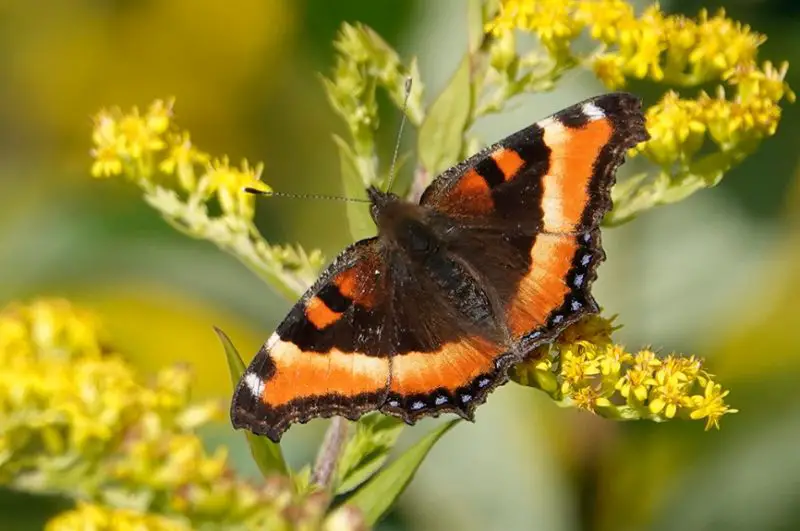
The black forewings of the Milbert’s Tortoiseshell butterfly (Aglais milberti) are squared off and have a wide orange band that borders them in black and changes to yellow inside. On the edge of their rear wings, some have blue markings. In the afternoon, males, with a wingspan of up to 6.3 cm, look for females. On the leaves of the host plant, females deposit vast quantities of eggs.
They are active from May to October and feed on rotting fruits, thistle, lilac, and goldenrod sap. They frequent marshes, forests, and wet pastures because they prefer damp environments. They can be found from New Mexico to West Virginia and from California to Nevada.
Atlantis Fritillary
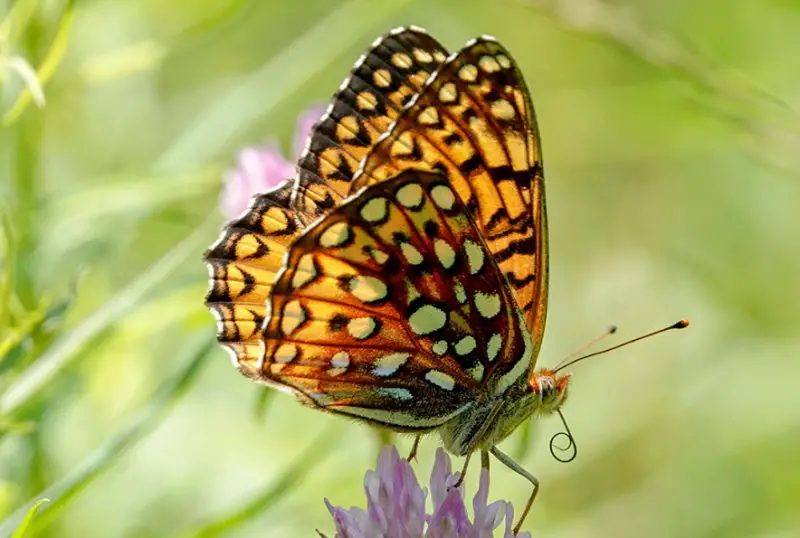
Often observed from June to September, the Atlantis Fritillary (Speyeria atlantis) exhibits diverse colors, most notably an orange tint with dark bases and black borders. Their undersides are a shade of chocolate brown, with silver dots on the hindwings. These butterflies, which can reach a wingspan of up to 7 cm, lay their eggs one at a time on leaf litter close to their host plants.
Common milkweed, mountain laurel, mints, and crown vetch are their preferred nectar sources. Their habitat is found in the Rocky Mountains, the Great Lakes, West Virginia, and Colorado.
Julia Heliconian
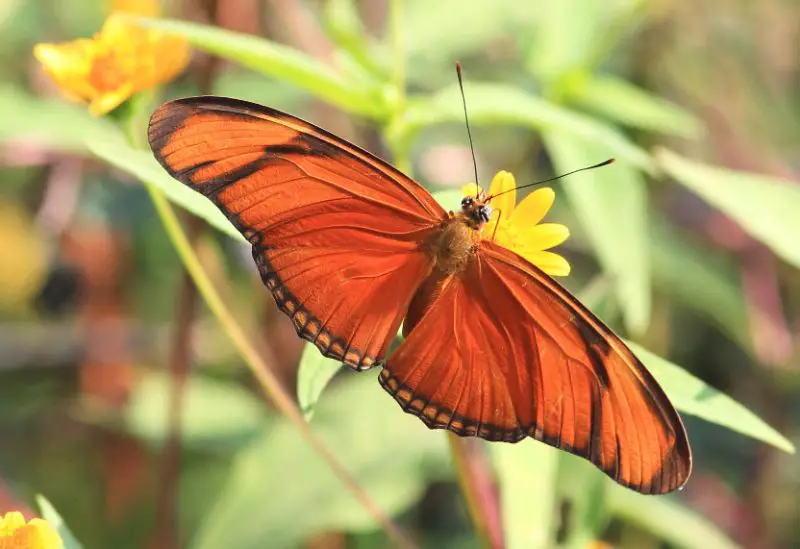
The Julia Heliconian, or Dryas iulia, has lengthy forewings. Males have bright orange coloration above and below, and their hindwings are edged in black. Less colorful females have more black marks on them. Their wingspan is up to 9.2cm, therefore these are big butterflies. Year-round residents of southern Florida and South Texas, they travel northward in the summer.
They live in fields and subtropical hammocks, eating on nectar from flowers. They are found in parts of eastern Nebraska, southern Texas, Mexico, Central America, and Florida.
Broad-Winged Skipper
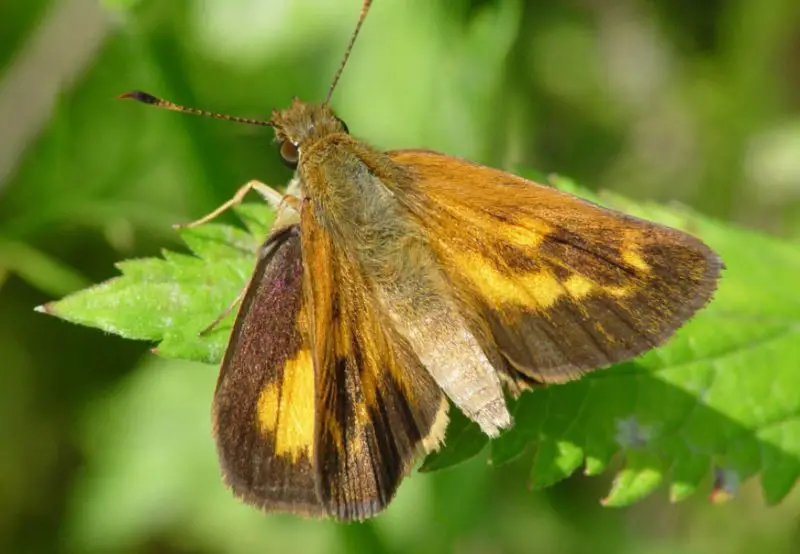
The dark brown, rounded forewings of the Broad-winged Skipper (Poanes viator) are spotted with cream and orange regions, while the hindwings are orange with black veins and margins. Their wings are orange-brown in color with streaks of yellow and orange underneath. They can be seen from May to August in Texas, from June to August inland, and from July to August along the Atlantic Coast. Their wingspan is 5.7 cm.
While coastal populations preferred swamp milkweed, thistles, and fleabane, inland populations prefer the nectar of milkweed and blue vervain. They are often found close to both freshwater and saltwater wetlands.
Aphrodite Fritillary
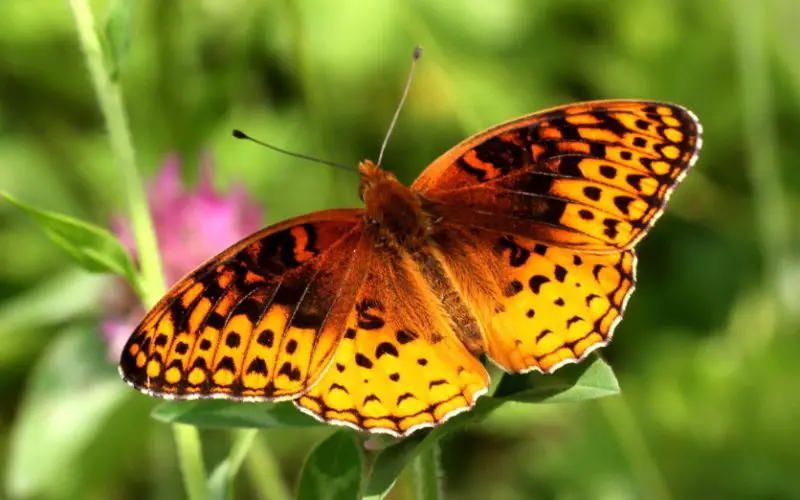
The hue of the Aphrodite Fritillary (Speyeria aphrodite) varies, ranging from red to orange/brown, and males frequently have a black patch on their wings. Below, a light stripe decorates their wings. They can reach a maximum wingspan of 8.3 cm, making them large butterflies. Near violet plants, where caterpillars eat the tender leaves, females deposit their eggs.
They are frequently seen from June through September, when they feed on milkweed and viper’s bugloss. They are widespread, ranging from the Great Plains to the Rocky Mountains, Arizona to Georgia, and New Mexico. They prefer a variety of environments, including meadows, open oak woodlands, bogs, prairies, and dry fields.
Black and Orange Butterfly Meaning
The symbolism behind a black and orange butterfly encompasses various cultural interpretations. In some traditions, it represents transformation and rebirth, as the colors evoke the cycle of life, death, and renewal. Others see it as a symbol of joy, vitality, and creativity, while some cultures associate it with warning or protection. Overall, the black and orange butterfly holds a rich tapestry of meanings, reflecting the diverse perspectives and beliefs of humanity.
Read More: Yellow and Black Butterfly: 23 Types and Pictures
